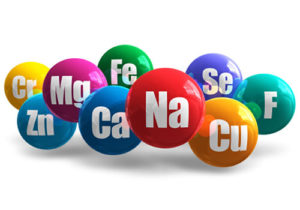Trace Elements
6 July 2017 As an industry we appear to have a fascination with trace elements, yet wildlife thrive without any supplementation! The only cases I know where wildlife seek out specific minerals is for salt (which all animals eat more of than they require) or where animals eat specific clays to help bind poisons in the food they eat).
As an industry we appear to have a fascination with trace elements, yet wildlife thrive without any supplementation! The only cases I know where wildlife seek out specific minerals is for salt (which all animals eat more of than they require) or where animals eat specific clays to help bind poisons in the food they eat).
This does not mean we do not need to supplement farm animals. Wild animals don’t need as high a nutrient spec as domestic ones because we ask more of the latter in terms of production. For example where we are feeding “unnatural” feeds known to contain little or very low levels of minerals/trace elements such as straw, then suitable supplements are essential. (However what trace elements and in particular vitamins are there in winter feeds of many of our wild ruminants, eg bison, red deer, musk ox, reindeer, etc many of which are also pregnant over the winter?)
For the winter the best approach is to analyse the feeds being used and check the trace element content of the overall ration against the requirements of the animal. The appropriate mineral mix can then be purchased and incorporated into the ration to ensure each animal receives, as close as possible, the required amount each day.
Supplementing stock over the summer is more difficult and hence more expensive, so it is important to first check that it is required and will give a financial return. The important points to remember are –
- They are called trace elements because only very low levels are required per head per day.
- If the animal has been correctly supplemented over the winter, body reserves, where appropriate, will be topped up ready for the summer.
- That one of the major causes of trace element deficiency is self inflicted – by feeding an excessive amount of another trace element/mineral.
Check You Need It
The best approach is to monitor performance and, if it falls below target, blood sample a proportion of the animals. If these all come back as normal the problem is almost certainly due to other factors eg fluke. If there is a deficiency then appropriate supplementation can be given but care must be taken not to supply an excess which could lock up other elements, resulting in other deficiencies.
Always Check It Is Working
When beginning to supplement animals always check the animals are responding ie confirm the diagnosis is correct. The best way to do this is by monitoring the performance of the animals. Where this is difficult taking blood samples 2 – 3 weeks after the supplement has been administered, preferably from the same animals who were originally sampled, should confirm the supplement is working.
Where it has become routine to use trace element supplements at grass it is worthwhile checking every 4 – 5 years that the are actually needed. This can be done by not treating a small number of animals at turnout and monitoring their performance against the rest. This may sound a risky strategy but could be considerably less expensive compared to routinely spending a significant amount on trace element supplementation without any evidence that they are actually needed. Again blood sampling a proportion of supplemented and unsupplemented animals at the end of the summer will help confirm whether they were actually required.
The one major exception to all of this would be feeding magnesium to avoid hypomagnesemia in cows.
Basil Lowman, basil.lowman@sac.co.uk
Sign up to the FAS newsletter
Receive updates on news, events and publications from Scotland’s Farm Advisory Service
